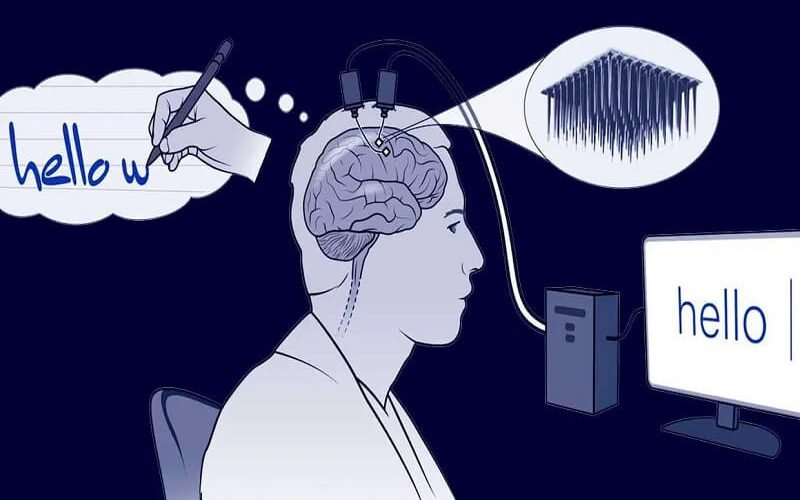
With the rapid advancements in technology, scientists and researchers have been exploring the potential of interfacing the human brain with computers. This technology is known as Brain-Computer Interface (BCI), also called a neural interface, brain-machine interface, or direct neural interface. The concept of BCI involves connecting the human brain to a computer to control or communicate with devices using neural signals. In this article, we will discuss the concept of BCI, its history, types, applications, advantages, and challenges.
The idea of a direct interface between the brain and a computer was first proposed in the early 1970s. However, it was not until the 1990s when the first BCI systems were developed. The first successful BCI was developed by Gerwin Schalk and his team in 2004, which used electroencephalography (EEG) to control a computer cursor. Since then, various types of BCI systems have been developed, and the technology has been used in many fields.
Types of Brain-Computer Interface (BCI)
There are four types of BCI systems, based on the method of signal acquisition:
1. Invasive BCI
Invasive BCIs involve implanting electrodes directly into the brain tissue, which allows for high-quality signal acquisition. These types of BCIs are mostly used for medical applications, such as treating epilepsy, Parkinson’s disease, and spinal cord injuries.
2. Non-invasive BCI
Non-invasive BCIs use external sensors to record neural signals from the scalp, skull, or the skin. The most common types of non-invasive BCIs include EEG, functional magnetic resonance imaging (fMRI), and magnetoencephalography (MEG). These types of BCIs are mostly used for research and experimental purposes.
3. Semi-invasive BCI
Semi-invasive BCIs involve implanting electrodes between the skull and the brain’s surface. These types of BCIs offer a compromise between the invasiveness and the signal quality of invasive and non-invasive BCIs.
4. Electrocorticography (ECoG)
ECoG is a type of BCI that involves implanting electrodes directly on the surface of the brain. ECoG offers high signal quality and spatial resolution and is mostly used for medical applications.
Applications of Brain-Computer Interface (BCI)
BCI technology has a wide range of applications, including medical, entertainment, gaming, and communication. Here are some examples of BCI applications:
1. Medical Applications
BCI technology can be used to treat various medical conditions, such as paralysis, spinal cord injuries, epilepsy, and Parkinson’s disease. BCI systems can help restore motor function, improve communication, and reduce the severity of symptoms.
2. Gaming and Entertainment
BCI technology can be used to control video games and virtual reality environments, providing a more immersive experience for the user.
3. Communication
BCI systems can help people with communication disorders, such as ALS, to communicate more effectively by translating their thoughts into speech or text.
4. Military Applications
BCI technology can be used to enhance the performance of soldiers, pilots, and other military personnel, by providing them with real-time feedback on their cognitive states.
EEG-Based BCI
Electroencephalography (EEG) is a non-invasive method that measures the electrical activity of the brain using sensors placed on the scalp. EEG-based BCI systems are the most common type of BCI, and they are used in a variety of applications such as gaming, virtual reality, and medical treatment.
Other Types of BCI
Other types of BCI systems include magnetic resonance imaging (MRI)-based BCI, functional near-infrared spectroscopy (fNIRS)-based BCI, and electrocorticography (ECoG)-based BCI. These systems use different sensors and signal processing algorithms to extract the brain signals and perform the desired actions.
Applications of BCI
BCI has numerous applications in different fields, including medical treatment, gaming, entertainment, and communication. Here are some examples:
Medical Treatment
BCI can be used to help people with disabilities such as paralysis or locked-in syndrome to control robotic devices or communicate with others. BCI can also be used to monitor brain activity and detect abnormalities that may indicate the presence of a disease or a mental disorder.
Gaming and Entertainment
BCI can be used to enhance the gaming and entertainment experience by allowing users to control the games or virtual environments using their thoughts or emotions. BCI can also be used to create new forms of interactive art and media.
Communication
BCI can be used to provide a new communication channel for people who cannot communicate using traditional methods such as speech or writing. BCI can also be used to enhance the communication abilities of healthy individuals by allowing them to communicate more efficiently and accurately.

